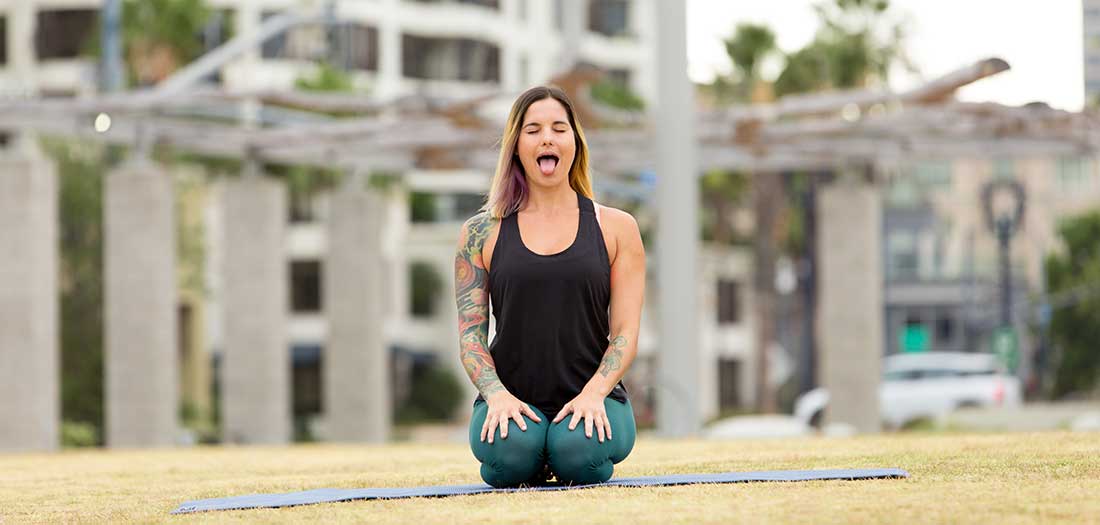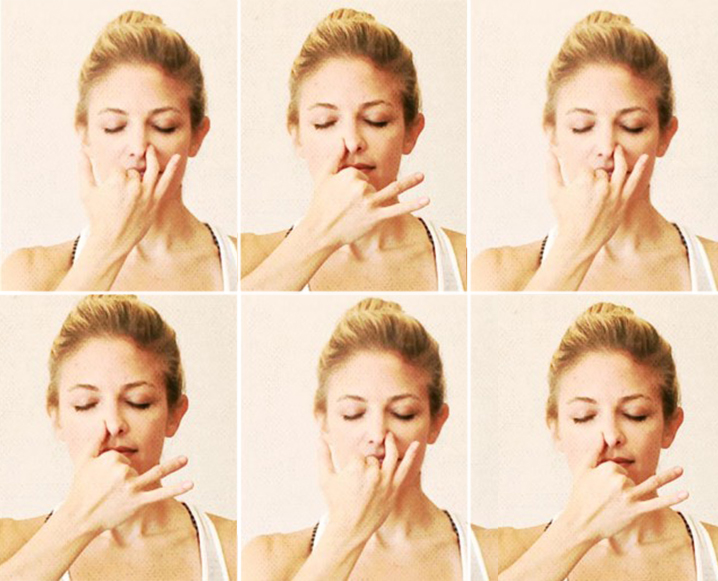8 esercizi di respirazione da provare quando ti senti ansioso
Se ti senti senza fiato a causa dell’ansia, ci sono tecniche di respirazione che puoi provare ad alleviare i sintomi e iniziare a sentirti meglio.
Diamo un’occhiata a diversi che puoi fare in qualsiasi momento della giornata o costruire momenti più lunghi per te stesso.
1. Allunga l’espirazione

Inspirare profondamente potrebbe non sempre calmarti. Fare un respiro profondo è in realtà collegato al sistema nervoso simpatico, che controlla la risposta di lotta o fuga. Ma l’espirazione è legata al sistema nervoso parasimpatico, che influenza la capacità del nostro corpo di rilassarsi e calmarsi.
Fare troppi respiri profondi troppo velocemente può effettivamente farti iperventilare. L’iperventilazione diminuisce la quantità di sangue ricco di ossigeno che scorre al cervello.
Quando ci sentiamo ansiosi o sotto stress, è più facile respirare troppo e finire per iperventilare, anche se stiamo cercando di fare il contrario.
- Before you take a big, deep breath, try a thorough exhale instead. Push all the air out of your lungs, then simply let your lungs do their work inhaling air.
- Next, try spending a little bit longer exhaling than you do inhaling. For example, try inhaling for four seconds, then exhale for six.
- Try doing this for two to five minutes.
Questa tecnica può essere eseguita in qualsiasi posizione comoda per te, tra cui stare in piedi, seduto o sdraiato.
2. Respirazione dell’addome

Respirare dal diaframma (il muscolo che si trova appena sotto i polmoni) può aiutare a ridurre la quantità di lavoro che il tuo corpo deve fare per respirare.
Per imparare a respirare dal diaframma:
Check-in
- For comfort, lie down on the floor or bed with pillows beneath your head and knees. Or sit in a comfortable chair with your head, neck, and shoulders relaxed, and your knees bent.
- Then, put one hand under your rib cage and one hand over your heart.
- Inhale and exhale through your nose, noticing how or if your stomach and chest move as you breathe.
- Can you isolate your breathing so you bring air deeper into your lungs? What about the reverse? Can you breathe so your chest moves more than your stomach?
Alla fine, vuoi che il tuo stomaco si muova mentre respiri, invece del tuo petto.
Pratica la respirazione della pancia
- Sit or lie down as described above.
- Place one hand on your chest and one hand on your stomach somewhere above your belly button.
- Breathe in through your nose, noticing your stomach rise. Your chest should remain relatively still.
- Purse your lips and exhale through your mouth. Try engaging your stomach muscles to push air out at the end of the breath.
Affinché questo tipo di respirazione diventi automatica, dovrai praticarla quotidianamente. Prova a fare l’esercizio tre o quattro volte al giorno per un massimo di 10 minuti.
Se non hai usato il diaframma per respirare, potresti sentirti stanco all’inizio. Diventerà più facile con la pratica però.
3. Messa a fuoco del respiro
Quando la respirazione profonda è focalizzata e lenta, può aiutare a ridurre l’ansia. Puoi fare questa tecnica sedendoti o sdraiati in una posizione tranquilla e confortevole. Allora:
- Notice how it feels when you inhale and exhale normally. Mentally scan your body. You might feel tension in your body that you never noticed.
- Take a slow, deep breath through your nose.
- Notice your belly and upper body expanding.
- Exhale in whatever way is most comfortable for you, sighing if you wish.
- Do this for several minutes, paying attention to the rise and fall of your belly.
- Choose a word to focus on and vocalize during your exhale. Words like “safe” and “calm” can be effective.
- Imagine your inhale washing over you like a gentle wave.
- Imagine your exhale carrying negative and upsetting thoughts and energy away from you.
- When you get distracted, gently bring your attention back to your breath and your words.
Pratica questa tecnica per un massimo di 20 minuti al giorno quando puoi.
4. Respirazione uguale

Un’altra forma di respirazione che deriva dall’antica pratica del pranayama yoga è la respirazione uguale. Ciò significa che stai inspirando per la stessa quantità di tempo in cui stai espirando.
Puoi praticare la respirazione uguale da una posizione seduta o sdraiata. Qualunque posizione tu scelga, assicurati di metterti comodo.
- Shut your eyes and pay attention to the way you normally breathe for several breaths.
- Then, slowly count 1-2-3-4 as you inhale through your nose.
- Exhale for the same four-second count.
- As you inhale and exhale, be mindful of the feelings of fullness and emptiness in your lungs.
Mentre continui a praticare la respirazione uguale, il tuo secondo conteggio potrebbe variare. Assicurati di mantenere l’inspirazione e l’espirazione allo stesso modo.
5. Respirazione risonante

La respirazione risonante, chiamata anche respirazione coerente, può aiutarti a calmare l’ansia e ad entrare in uno stato rilassato. Per provarlo tu stesso:
- Lie down and close your eyes.
- Gently breathe in through your nose, mouth closed, for a count of six seconds.
- Don’t fill your lungs too full of air.
- Exhale for six seconds, allowing your breath to leave your body slowly and gently. Don’t force it.
- Continue for up to 10 minutes.
- Take a few additional minutes to be still and focus on how your body feels.
Respirazione yogica (pranayama)
Lo yoga è una pratica di benessere con radici antiche e la respirazione è al centro di ogni variazione dello yoga.
Una forma di yoga, il pranayama, include molteplici variazioni respiratorie che possono aiutare con l’ansia. Alcuni di questi includono l’espirazione allungata e la respirazione uguale (entrambi descritti sopra), così come il respiro del leone e la respirazione alternata delle narici (nadi shodhana).
6. Il respiro del leone

Il respiro del leone comporta l’espirazione con forza. Per provare il respiro del leone:
- Get into a kneeling position, crossing your ankles and resting your bottom on your feet. If this position isn’t comfortable, sit cross-legged.
- Bring your hands to your knees, stretching out your arms and your fingers.
- Take a breath in through your nose.
- Breathe out through your mouth, allowing yourself to vocalize “ha.”
- During exhale, open your mouth as wide as you can and stick your tongue out, stretching it down toward your chin as far as it will go.
- Focus on the middle of your forehead (third eye) or the end of your nose while exhaling.
- Relax your face as you inhale again.
- Repeat the practice up to six times, changing the cross of your ankles when you reach the halfway point.
7. Respirazione narice alternata

Per provare alternare la respirazione delle narici, siediti in un posto confortevole, allungando la colonna vertebrale e aprendo il petto.
Appoggia la mano sinistra in grembo e alza la mano destra. Quindi, appoggia il puntatore e il dito medio della mano destra sulla fronte, tra le sopracciglia. Chiudi gli occhi, inspirando ed espirando attraverso il naso.
- Use your right thumb to close the right-hand nostril and inhale slowly through the left.
- Pinch your nose closed between your right thumb and ring finger, holding the breath in for a moment.
- Use your right ring finger to close your left nostril and exhale through the right, waiting for a moment before you inhale again.
- Inhale slowly through the right nostril.
- Pinch your nose closed again, pausing for a moment.
- Now, open the left side and exhale, waiting a moment before you inhale again.
- Repeat this cycle of inhaling and exhaling through either nostril up to 10 times. Each cycle should take up to 40 seconds.
8. Meditazione guidata

Alcune persone usano la meditazione guidata per alleviare l’ansia interrompendo i modelli di pensiero che perpetuano lo stress.
Puoi praticare la meditazione guidata sedendoti o sdraiato in un luogo fresco, buio, confortevole e rilassante. Quindi, ascolta registrazioni calmanti mentre rilassi il tuo corpo e stabilizzi la respirazione.
Le registrazioni di meditazione guidata ti aiutano a guidarti attraverso i passaggi di visualizzazione di una realtà più calma e meno stressata. Può anche aiutarti a ottenere il controllo sui pensieri intrusivi che scatenano l’ansia.









